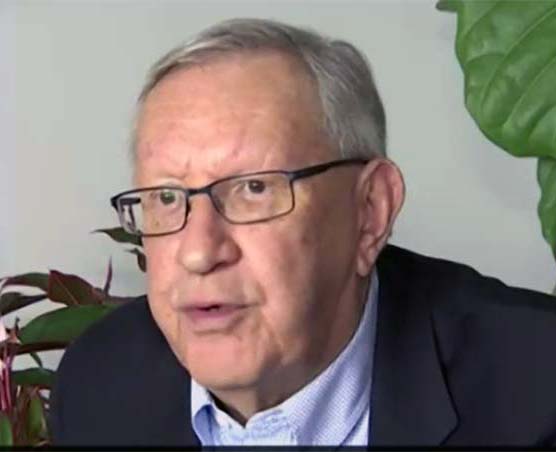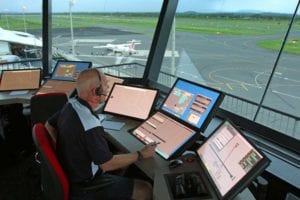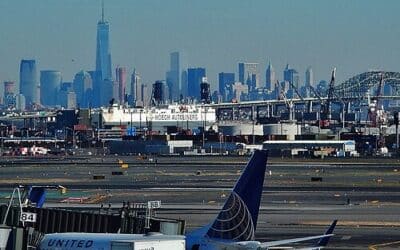The real issues with the air traffic control system (ATC) are the budget rules and the Congress.

At the end of the week, Newark Liberty International Airport suffered another radar and communications blackout. This ATC issue took place at night when air traffic was slow. The FedEx planes landed with no problem.
Both the Senate and the House are getting ready to throw money at the ATC problem. They are not looking at problems that they have ignored for years. Those problems are the budget rules and the Congressional control of the power of money. Until a system is set up to avoid the budget rules and the spending power, the problems with the ATC will continue. We need an attempt at a private non-profit type of air traffic organization.
Until the ATC mess is fixed, the system will have problems. We need budgets for the computer systems that will last more than four years and a program that will focus on fixing our NAS.
Here is the current opening of the Department of Transportation (DOT) and Federal Aviation Administration (FAA) approach to fixing our ATC.
The outage of a critical air traffic control system made international news in January 2023 when it caused the first nationwide ground stop since 9/11. The NOTAM system that failed, causing thousands of flight delays and cancellations, is just one of many crucial air traffic systems that, along with hundreds of facilities and thousands of pieces of infrastructure equipment, make up the NAS. Many of these systems, facilities, and equipment are decades old, antiquated, or obsolete and have outlived their useful service lives. While the FAA has highlighted the need to replace these critical legacy systems, facilities, and equipment before, the risk is greater now more than ever. Modernization of the NAS can no longer take 10+ years to complete; it must be done now.
Without modernization efforts – including upgraded technology, improved air traffic management, and enhanced safety measures – the risk of system failures, disruptions, and security vulnerabilities will only increase. The FAA’s investments in infrastructure and technology are not just improvements; they are all critical to ensuring the reliability and safety of the aviation industry in the coming decades. The agency needs greater technology investment to better accommodate increasing commercial space launch and re-entry activity and unmanned aircraft systems activity, while ensuring the US aviation system remains the safest in the world for the flying public and globally competitive against aggressive foreign competition.
A slow-paced modernization poses a higher risk because it extends the lifespan of unreliable, inefficient systems, amplifying safety, economic, and security vulnerabilities in the era of growing air traffic and cyber threats. Rapid, safe, well-managed modernization, despite short-term challenges, is less risky as it aligns with growing aviation demands and global standards. This investment will enhance operational efficiency, reduce flight delays, improve safety outcomes, and support the growing demand in commercial aviation and emerging entrants.
While tackling these challenges will not be easy, either politically or financially, now is the time to make the FAA’s funding needs a priority.
Over the past 15 years, the annual appropriation to the Facilities and Equipment (F&E) account, used to sustain and improve most of FAA’s air traffic control infrastructure, has remained essentially flat at approximately $3 billion per year. This stagnant funding has caused the FAA to lose about $1 billion in purchasing power due to inflation, as the agency seeks to maintain aging systems and infrastructure and meet ambitious goals to modernize the system for increased safety and efficiency of the NAS. Given the current conditions of the FAA’s infrastructure, we can no longer wait for funding levels to slowly catch up to the need. We need an immediate infusion of funding to address critical infrastructure needs.
This is throwing money at the problem. There is no mention of the budget rules or Congress. The airline industry has no will to fight that battle again at this time.
 The most significant problem is the stop-and-go approach mandated by the budget rules.
The most significant problem is the stop-and-go approach mandated by the budget rules.
Apple Corporation, Google, Meta, and Nvidia aim to deal with limitless possibilities. They plan at least a decade ahead of time. Improvements to computer systems, search engines, social media, and artificial intelligence have all taken decades to develop. Our ATC system, probably the most important consumer protection issue in the country, is dictated by four-year funding spurts.
The budget rules only allow money to be spent if it is in the budget. If it runs out, the projects stop. It fails to be included in the budget; it doesn’t start. If a Senator or a member of the House, especially the members of the committee that controls spending, is upset with the system, then the project will find itself without a budget slot.
The country is faced with a series of ATC problems.
At Washington Reagan Airport (DCA), a regional jet collided in mid-air with a helicopter. More than 60 passengers and crew members died. At Newark Airport, part of the NYC metroplex, last week had ATC problems that disrupted flights.
The WSJ put it this way, “Runway construction and air-traffic control staffing issues extend the pain, prompting hundreds of flight delays and cancellations last week alone… For travelers, there’s no end in clear sight, especially as the summer months and the inclement weather add to the airport’s troubles.”
Newark Airport can’t expand. It is hemmed in by busy roads as well.

Follow Canada and other nations with a private non-profit air traffic control organization.
This non-profit would allow the organization to eliminate the budget rules and plan ahead. It would get rid of the congressional influence, which hampers solving problems. I’m certain that Congress can find a way around this in extreme cases. This type of change would be the best solution to the ATC issues.
READ ALSO:
Six tips if you’re caught in 2025 Air Traffic Control nightmare
20 tips to prevent ID theft and maintain security while traveling in 2025

Charlie Leocha is the President of Travelers United. He has been working in Washington, DC, for the past 14 years with Congress, the Department of Transportation, and industry stakeholders on travel issues. He was the first consumer representative to the Advisory Committee for Aviation Consumer Protections appointed by the Secretary of Transportation from 2012 through 2018.

 Without modernization efforts – including upgraded technology, improved air traffic management, and enhanced safety measures – the risk of system failures, disruptions, and security vulnerabilities will only increase. The FAA’s investments in infrastructure and technology are not just improvements; they are all critical to ensuring the reliability and safety of the aviation industry in the coming decades. The agency needs greater technology investment to better accommodate increasing commercial space launch and re-entry activity and unmanned aircraft systems activity, while ensuring the US aviation system remains the safest in the world for the flying public and globally competitive against aggressive foreign competition.
Without modernization efforts – including upgraded technology, improved air traffic management, and enhanced safety measures – the risk of system failures, disruptions, and security vulnerabilities will only increase. The FAA’s investments in infrastructure and technology are not just improvements; they are all critical to ensuring the reliability and safety of the aviation industry in the coming decades. The agency needs greater technology investment to better accommodate increasing commercial space launch and re-entry activity and unmanned aircraft systems activity, while ensuring the US aviation system remains the safest in the world for the flying public and globally competitive against aggressive foreign competition.


